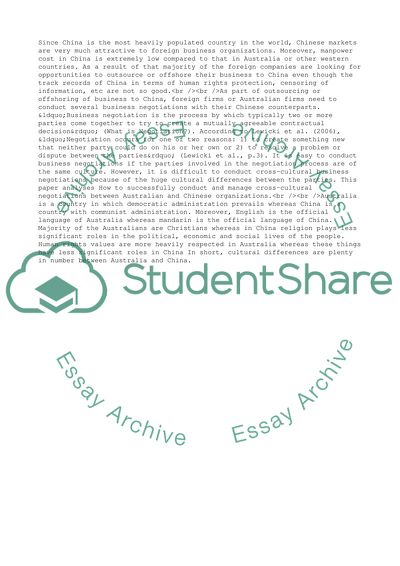Cite this document
(How to Successfully Conduct and Manage Cross-Cultural Negotiations Literature review, n.d.)
How to Successfully Conduct and Manage Cross-Cultural Negotiations Literature review. https://studentshare.org/business/1781141-how-to-successfully-conduct-and-manage-cross-cultural-negotiations-between-australian-and-chinese-organizations
How to Successfully Conduct and Manage Cross-Cultural Negotiations Literature review. https://studentshare.org/business/1781141-how-to-successfully-conduct-and-manage-cross-cultural-negotiations-between-australian-and-chinese-organizations
(How to Successfully Conduct and Manage Cross-Cultural Negotiations Literature Review)
How to Successfully Conduct and Manage Cross-Cultural Negotiations Literature Review. https://studentshare.org/business/1781141-how-to-successfully-conduct-and-manage-cross-cultural-negotiations-between-australian-and-chinese-organizations.
How to Successfully Conduct and Manage Cross-Cultural Negotiations Literature Review. https://studentshare.org/business/1781141-how-to-successfully-conduct-and-manage-cross-cultural-negotiations-between-australian-and-chinese-organizations.
“How to Successfully Conduct and Manage Cross-Cultural Negotiations Literature Review”. https://studentshare.org/business/1781141-how-to-successfully-conduct-and-manage-cross-cultural-negotiations-between-australian-and-chinese-organizations.


